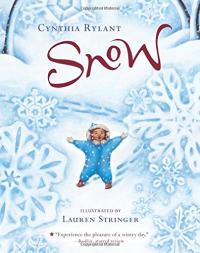
Snow has a different impact on those who experience it. This lyrical celebration of snow and related activities allows readers to experience it in many ways, from seeing trees anew or getting out cavorting in it told in poetic language and evocative illustrations.
Snow

Figure skating has become a popular Winter Olympics sport. Meet well-known figure skaters from around the world in full color photographs and a readable but brief text. A table of contents allows newly independent readers to easily find their favorite skater in this collective biography.
Skating Superstars
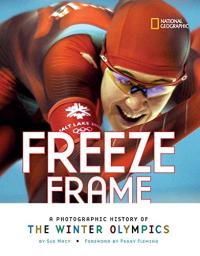
The winter games began in France in 1924. This compelling examination of their start, the evolution of the games, and more are revealed in photographs and compelling text. It is current through the 2006 winter Olympic Games.
Freeze Frame: A History of the Winter Olympics

Canada

Have you ever wondered why the leopard has spots or why a spider has a big butt? This collection of six stories uses African folklore and storytelling techniques to explain natural phenomena.
Why Leopard has Spots: Dan Stories from Liberia
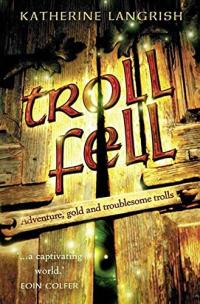
Troll Fell
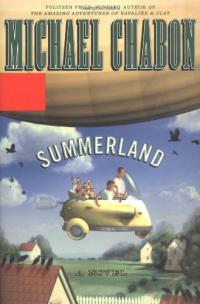
Summerland
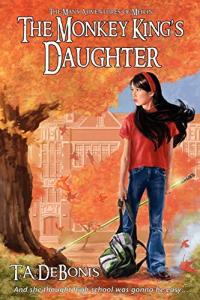
The Monkey King’s Daughter

Cassius Clay learned to box when he was twelve, trained by Joe Martin in his native Louisville, Kentucky. He would go on to win the Golden Gloves championship and to box in the Olympics. Clay stunned not only the sports world but the world as a whole by winning the world boxing championship and changing his name to Muhammad Ali when he embraced Islam. His portrait is painted in a chronological account, highlighting Ali’s words in text and dramatic full-color paintings.
Muhammad Ali: The People’s Champion

Martin Luther King, Jr. prepared diligently for his now famous “I have a dream” speech given on August 28, 1963 during the March on Washington for Jobs and Freedom. It was King’s unshakable belief in nonviolence and the power of words that galvanized the country. This informal account is both personal and satisfying as revealed by Martin’s older sister who watched it on television with their parents in Atlanta. Full-color illustrations and expressive typography highlight words and enhance the tone.
March On! The Day My Brother Martin Changed the World

In spite of growing up in the 1940s before the United States was integrated, in a segregated Mobile, Alabama, Henry Aaron dreamed of playing baseball. His perseverance and courage paid off; he was to become one of the most talented and revered players, whose major league career spanned from 1954 through 1976. He was also a vocal spokesperson for equality between white and black players. Aaron’s early life, his career, and his impact on the game are revealed in an honest, sometimes difficult text and richly colored paintings.
Henry Aaron’s Dream

The youngest daughter of civil rights leader Andrew Young shares a time when she and her two older sisters moved from New York to Atlanta to protest and ultimately change unfair laws. The narration is innocent and child-like — effectively describing what Jim Crow was and giving glimpse of the leaders of the period (including Martin Luther King, Jr.). Soft lined, textured illustrations evoke the time and its tenor while portraying people in a recognizable way. An end note provides additional information about the people depicted.
Child of the Civil Rights Movement
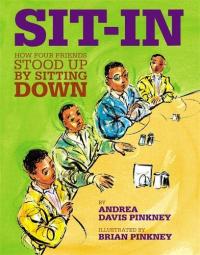
The words of Dr. Martin Luther King, Jr., inspired four students to protest in a way that ultimately changed the United States. Their peaceful dissent at the segregated lunch counter in Greensboro, North Carolina, would “combine black with white to make sweet justice.” The “Greensboro Four” began their sit-in on February 1, 1960 and contributed to the passage of the 1964 Civil Rights Act. The text suggests storytelling and is accompanied by light-lined but evocative illustrations; back matter completes this compelling portrait.
Sit-In: How Four Friends Stood Up by Sitting Down

This is not the Tooth Fairy of old; this tooth fairy defies old conceptions of the work, and how this spunky character gets around (actually by way of turbo-charged surfboard). Fast and funny, the Tooth Fairy here will knock down any spritely misconceptions as she tickles the funny bone.
You Think It’s Easy Being the Tooth Fairy?

Who has teeth? Everyone from people to the zebra! And so opens this book of questions and answers designed to engage and provide readers with information revealed in lively rhythm and rhyme with Seussian humor. (LeSieg is Geisel spelled backwards, Dr. Seuss’ real name.) Cartoon-like illustrations complement the lightheartedness of the book.
The Tooth Book

Dr. Flossman welcomes his class of incisors, canines, etc. (appropriately for each of the typical mouth’s 32 teeth), providing actual information in a wacky, slightly abstract combination of art and story.
Open Wide: Tooth School Inside
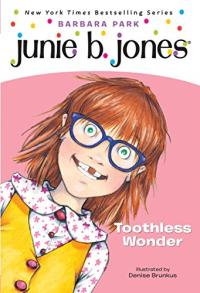
Junie B. worries about her loose tooth. If she’s the first in her class to lose a tooth, will she appear different, weird? It’s inevitable that Junie B.’s tooth comes out and when it does, she sets out to learn what the Tooth Fairy does with all of those teeth. The answer is, of course, addressed in Junie B.’s signature, amusing style!
Junie B.: Toothless Wonder

Babies don’t have teeth as they don’t need them yet. But as children grow, teeth grow in and then fall out to be replaced by adult teeth. This informative, appealing, and easy science book is just right to answer early questions about teeth and dental hygiene — and may encourage even more questions.
How Many Teeth?
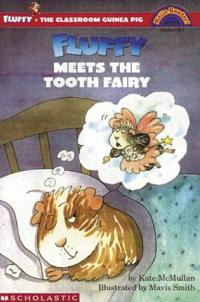
Fluffy, the class pet guinea pig wants to lose a tooth to meet the tooth fairy but then learns that guinea pigs don’t lose teeth; rather they gnaw to wear them down. When he goes home with one of the kids, however, Fluffy manages to meet the Tooth Fairy after all! Light and playful, this is sure to engage newly independent readers.
Fluffy Meets the Tooth Fairy

Because Holly is reluctant to give up her newly fallen out tooth, she starts to correspond with the Tooth Fairy, asking questions that trouble many children (such as what happens to the teeth). The Tooth Fairy responds to all questions in this elegantly illustrated book.
Dear Tooth Fairy

DW’s plot to fool the tooth fairy doesn’t work so Arthur, her brother of tooth-losing age, assumes a magical role himself. This easier-to-read book is just right for new readers and has stickers intended to reinforce vocabulary.
Arthur Tricks the Tooth Fairy
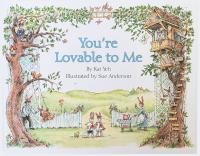
In a happy but chaotic home, the bunnies had had a big day and a hard night — and Mama loved them throughout. As a tired Mama sits down at last, her dad comes in to reassure her that no matter how old children get, a parent’s love continues. Small, detailed, line and wash illustrations complement this warm, comforting story.
You’re Lovable to Me

Young animals are fussy, messy, pouting, and more — but still each “Mama loves her” little one. Gentle rhymes reassure the young that no matter how they behave or what they look like, Mama always loves them, reinforced as the human mother embraces her young son. Warm-toned watercolors enhance the rhythmic, rhyming text.
Who Loves the Little Lamb?

The special place in fathers’ hearts for their children is celebrated in this warmly illustrated, wise book. Rich language describes each animal dad’s prediction of their child’s growing up until a human father is pictured embracing an infant. This is as appealing as the author/illustrator’s I Love You as Much.
